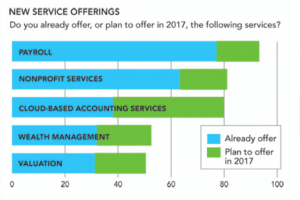Leadership is about developing people, and that includes giving difficult feedback to employees about their performance. Leaders who see corrective feedback as a partnership with their employees and an opportunity to encourage their growth and development reap great rewards in employee engagement and productivity. Yet many leaders avoid the opportunity to give developmental feedback or complain that when they do, the feedback falls on deaf ears.
Here are 10 ways to avoid a “deafening” approach when giving developmental feedback.
Go for the Goal – In many organizations where we consult, employees often tell us their goals are not clear. The manager knows the goals, but it’s as if they are guarding the goal from the employees. No wonder employees ignore feedback or become frustrated with it; if employees don’t know what you expect, it’s difficult to meet your expectations. This often discourages employees when they are working hard to get the job done. Meet with employees to discuss and set measureable goals, and check for understanding when an assignment is made. Ask employees, “What is your understanding of what we have discussed as your goal?” Making sure you are in agreement about the goal will give employees the opportunity to monitor their own progress and they will be more receptive to your feedback when improvement is needed.
Stick to the Facts – Employees are not likely to “hear” your feedback if it is steeped in vague generalities. Comments like, “You are a good leader,” or “You seem disinterested in your work,” do not tell employees what to keep doing or what to change. Feedback must be grounded in observable facts. For example, tell an employee, “I think you did a superb job of leading today’s meeting when you asked the team to submit solutions to the current problem and then incorporated their input into the final action plan.” Or say, “I’ve noticed a ten percent increase in the number of mistakes in your work in the past two weeks. How can I help you get back to your usual quality of work?”
Don’t Hoard – Do you save up numerous issues and address them all at once? When you address more than two problems at once, most employees put their fingers in their ears and decide the problem is you – they think you are too critical and difficult to please. Address the need for improvement with employees when the concern first surfaces. Keep in mind that employees can only respond to so much feedback at one time. Give them an opportunity to digest and respond to your feedback one incident at a time. When you have performance improvement discussions on a routine basis, you will never need to address more than one or two issues at a time.
Practice Anger Management – Do you avoid giving feedback until you are so frustrated you explode? Yelling at a person does not improve their ability to hear you; in fact, it does just the opposite – most people stop listening when they perceive you to be demeaning or disrespectful. It is the supervisor’s responsibility to provide feedback on a regular basis. Address concerns as soon as they happen while the problem is still manageable and bad habits have not become ingrained. Providing feedback regularly will foster an atmosphere of open communication, enhance performance, and reduce frustrations for both parties.
No Sugarcoating – Some leaders manage by “Hoping and Hinting.” They are too afraid to be honest with critical feedback so they drop indirect hints and hope the employee will get the message – which they never do. Some managers also sandwich constructive feedback between two positive statements of praise. Employees completely miss the importance of changing the problem behavior and then managers wonder why people don’t do what they ask.
Be direct with your feedback. Address the problem behavior and ask for the team member’s input on the problem. Then work together to identify a solution. Ask the employee to summarize your discussion including the problem, the impact, and the solutions for change. It is okay to let team members know what they do well; however, they need to be completely clear on the behavior that needs to change. Your tone should be kind, but your words must be direct.
No guts, No glory – Too often managers we work with don’t hold employees accountable for the goal or expectation. They may coach and counsel team members, yet there is no follow through or accountability, and therefore no reason for employees to take their feedback seriously. Follow through is everything in helping employees make lasting change. Good coaches are also clear about the consequences of not improving performance. Employees deserve to know the severity of the problem and that inattention to the problem could jeopardize their job.
Give Feedback Privately – Do you give feedback to the entire team, hoping that the person who needs to hear it will get it? Again, they never do. Instead, everyone who is meeting the goal or expectation wonders why you are talking to them, and often become disillusioned with your constant criticism of their good work. Another problem for leaders who handle feedback publicly is providing personal feedback to one person in front of the entire team. Belittling or demeaning a person in public never gets the results you want. You will also earn a reputation as a bully, and productive employees will begin to fear your public wrath. Make individual feedback just that – individual. Chose a private location and speak directly with the person whose behavior needs to change.
Don’t Talk AT People – You talk at people telling them what they did wrong, what impact it had, and what they better do differently. All the employee hears is blah, blah, blah, blah, blah. They often put their fingers in their ears and go about their way. You will be more effective if you have a two-way conversation with employees. Ask team members for their thoughts about the impact of their behavior and get them to agree their behavior is a problem and change is needed. Once they agree change is necessary, they are more likely to work with you to identify solutions. When they participate in identifying the solution, change is more likely. Without the acknowledgement that change is needed, behavior is likely to remain the same no matter how many times you tell them.
You vs. I – When you start a sentence with “You,” people automatically take a defensive position. Think about your response to these statements: “You seem confused,” or “You need to improve your skills.” If you are like most people, your first response would be, “I am not confused” or “I have a lot of skills.” You’ll get a better response if you start your feedback with “I.” Try saying, “I may have created some confusion about this project that I would like to clarify.” Or, “I would like to help you improve your ability to process data without errors.” Starting a sentence with “I” helps people let down their guard and opens up the conversation.
Review Regrets – I wish I had a dollar for every time an employee told me the only feedback they get is at their annual review and that it is usually late. A lack of regular feedback communicates to employees that you don’t care about them and that they are not important. If you save all the feedback for the annual review, you don’t give team members a chance to improve over time. It’s not fair to rate an employee “Needs Improvement” if this is the first they have heard of the problem. Provide feedback to team members on a frequent and regular basis so they have every opportunity to earn an “Exceeds Expectations.” It they do, you will earn a reputation as a great leader of a productive team.
Practice makes perfect. Prepare for conversations with staff members, and practice your presentation. The more feedback you give, the better you will be at giving developmental feedback that helps employees achieve success. Most important, convey that you are there to help the team member and honestly believe in the person’s ability to make the changes required to do the job well.
Business & Finance Articles on Business 2 Community(103)






